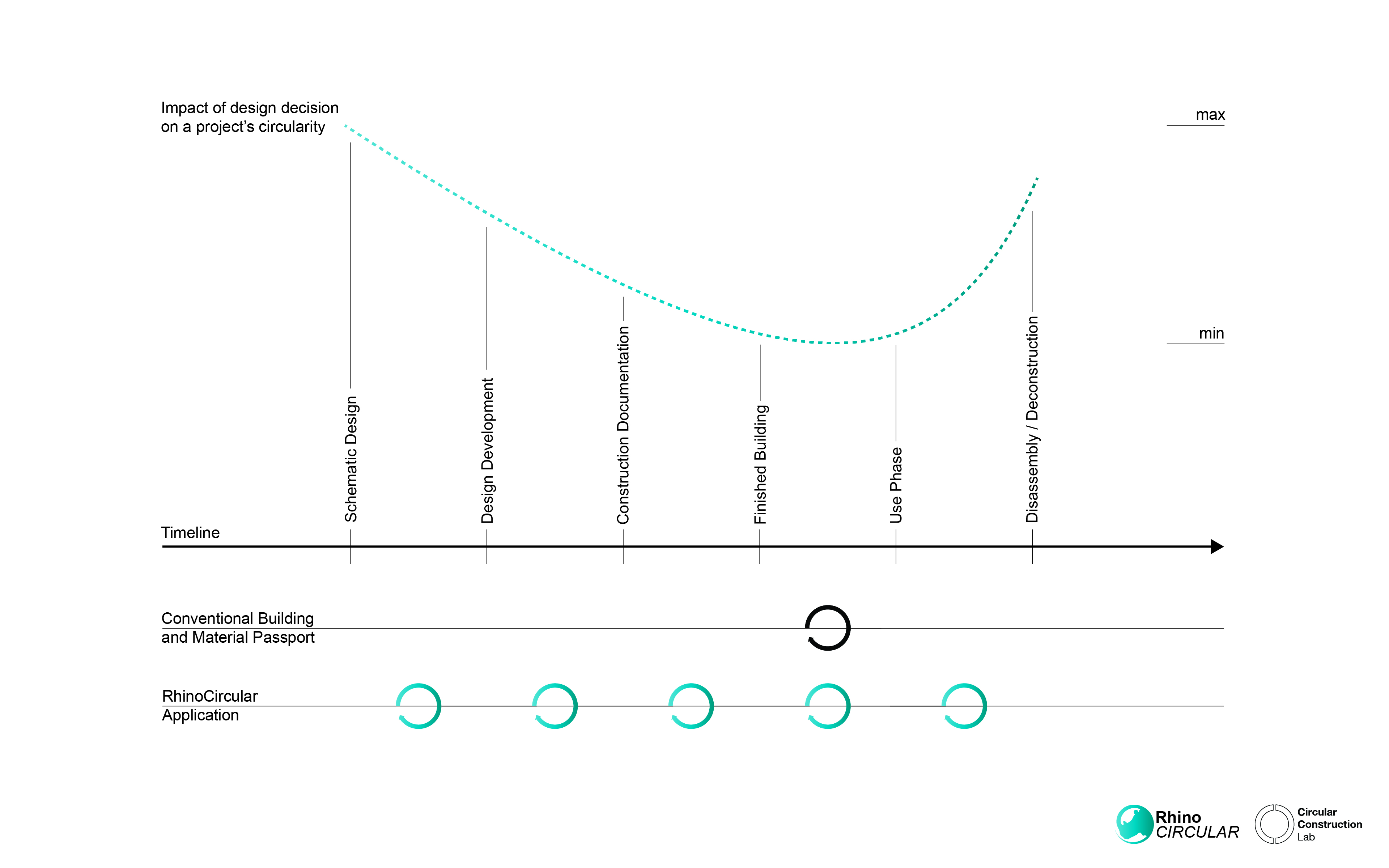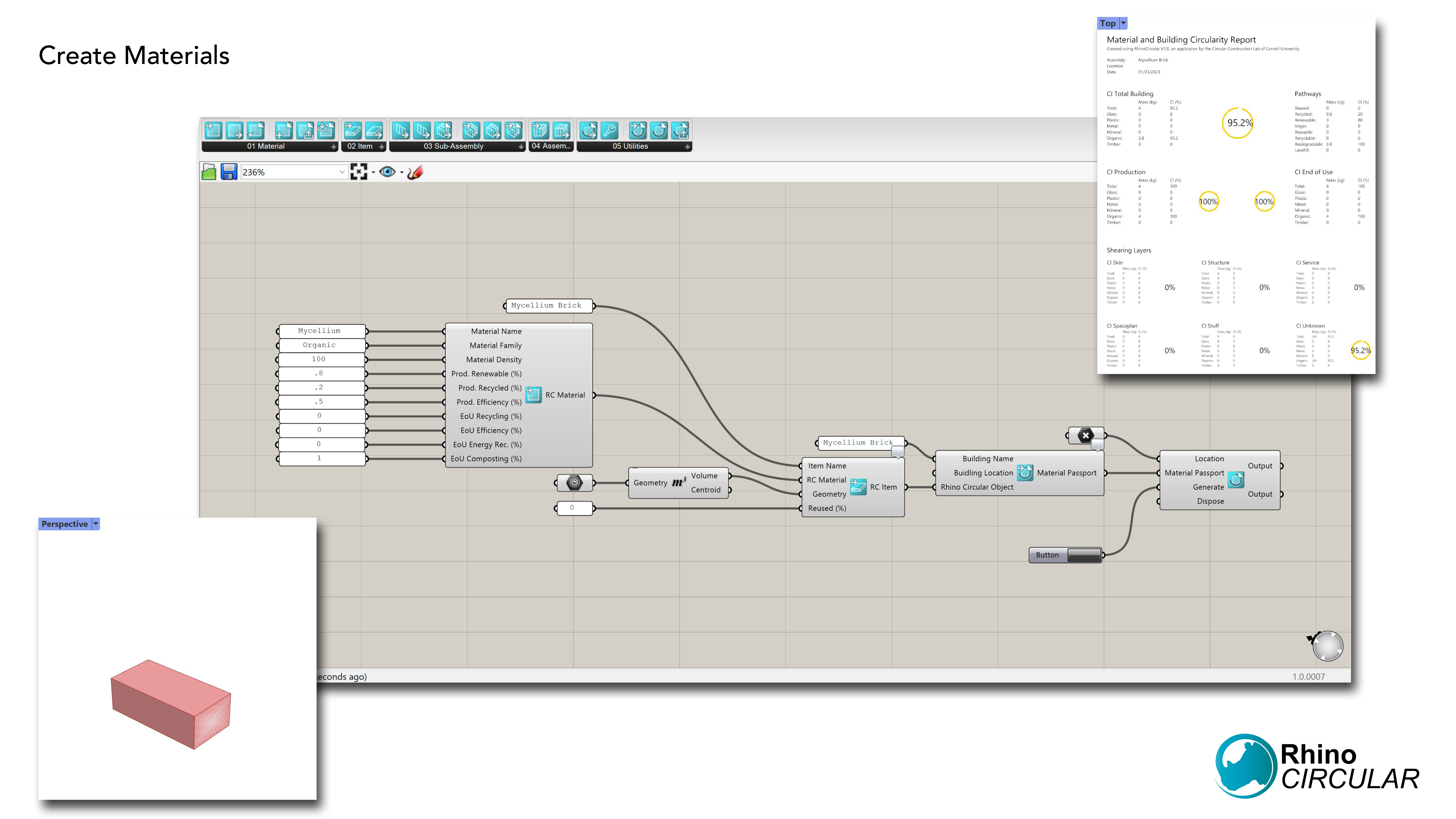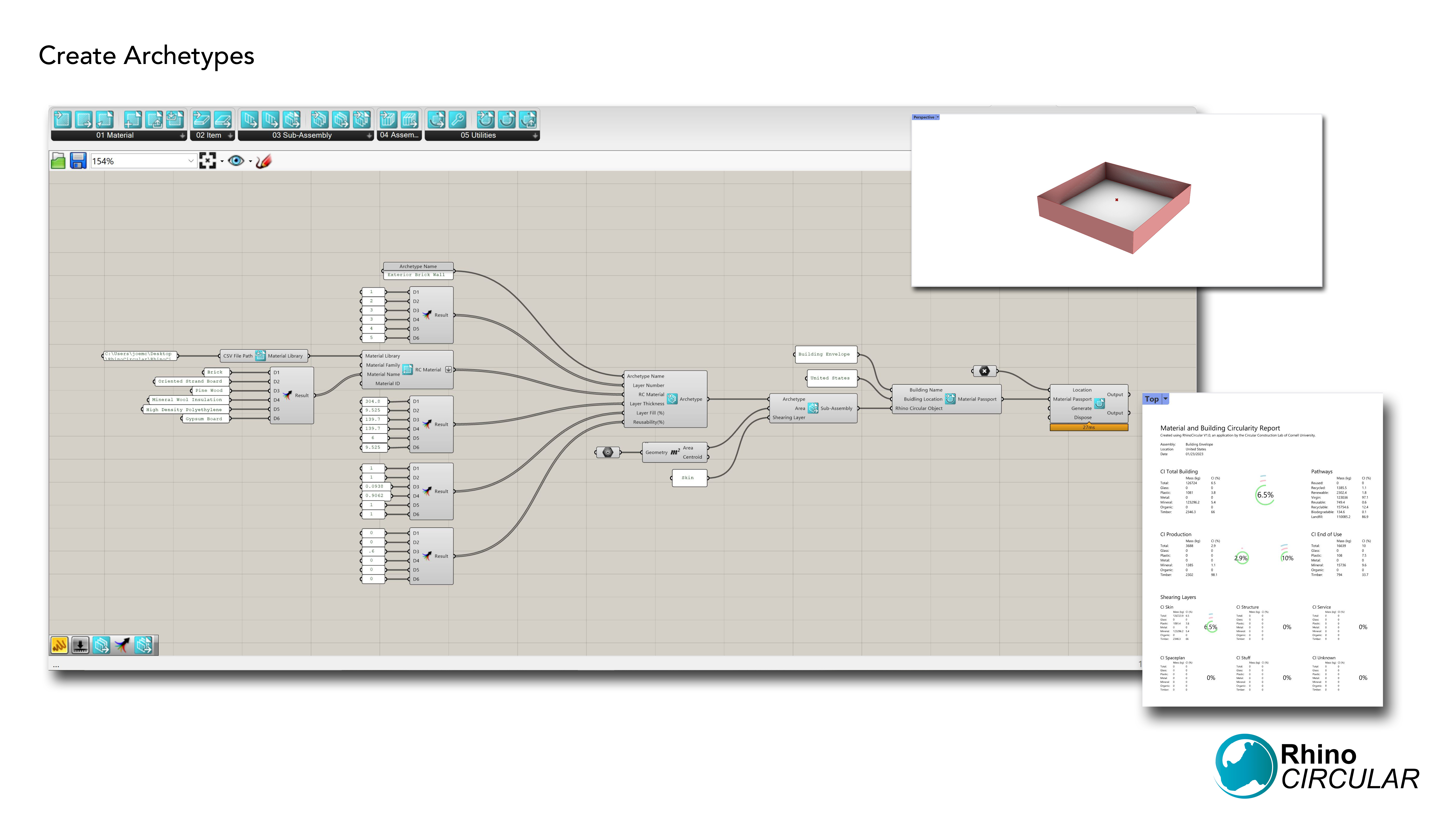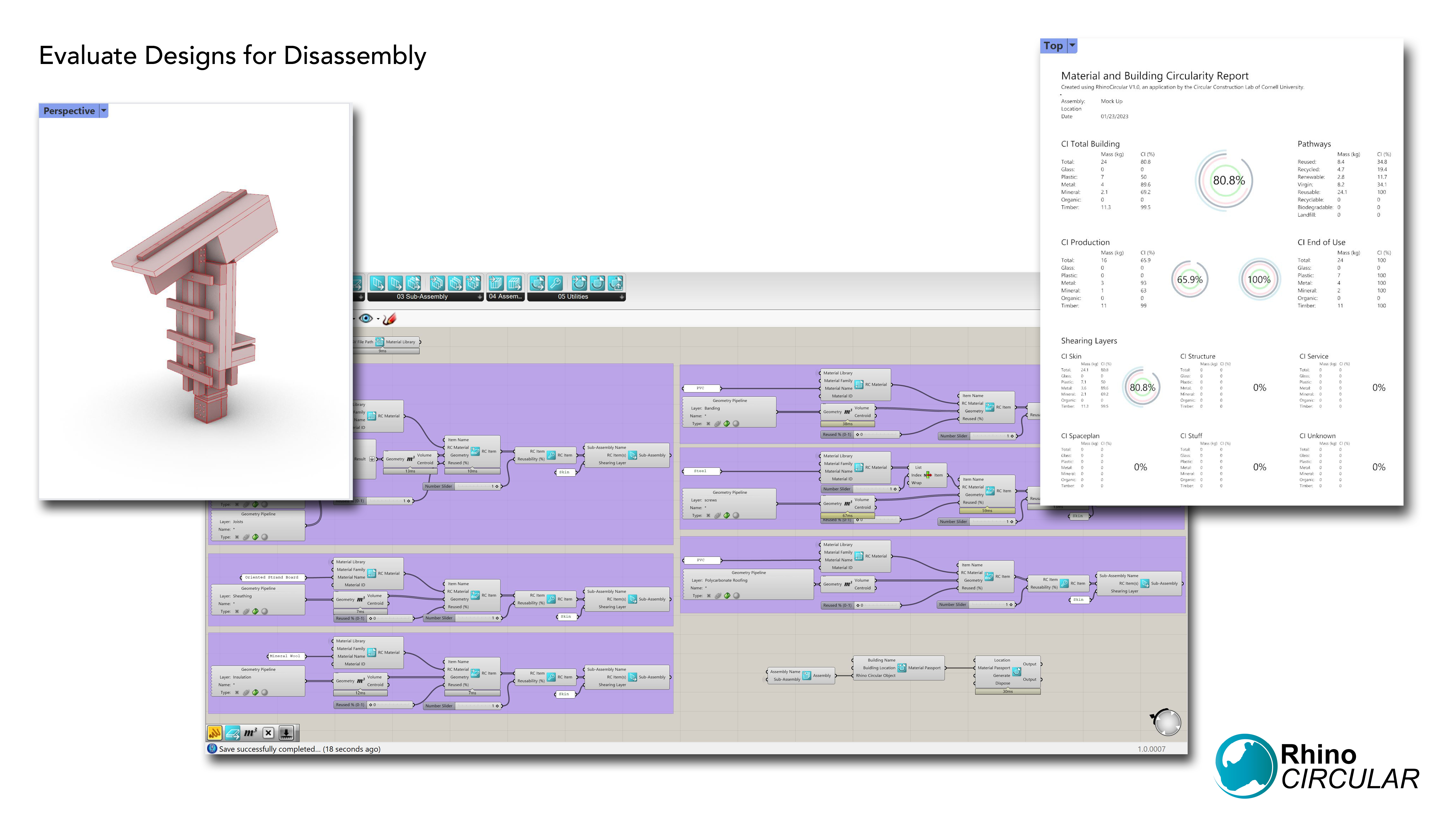Project Credits:
Felix Heisel
Cameron Behning
Haotian Ma
Joseph McGranahan
Cameron Nelson
Vesela Petrova
Hongjun Wu
RhinoCircular
2021 - Research

RhinoCircular, a CAD plugin developed within the Circular Construction Lab (CCL) at Cornell University, is a software tool to evaluate material circularity in the early phases of architectural design. It assesses a building design’s environmental impact with respect to its circularity: the degree to which design solutions minimize extraction and waste in favor of reusable, recyclable, and renewable material resources. Activating the built environment as a material reserve would prevent up to 50% of the industry’s emissions by capitalizing on embodied carbon. Thus, paradigm shifts in how we design and construct buildings are needed, and in how resources are managed within the built environment. Buildings and regions need to anticipate stocks and flows of materials, documenting and communicating which materials in what quantities and qualities become available for reuse or recycling where and when.
RhinoCircular allows direct and immediate feedback on design decisions regarding formal deliberations, structural considerations, material selection, and detailing based on material passports and circularity indicators. It can be integrated in existing and complex workflows and is compatible with industry-standard databases while providing its own essential dataset.
Embedded into Rhinoceros3D software, the tool consists of several components that can be combined or connected to suit the specific needs of a proposed project in any design phase or on any level of detail. The circularity indicator itself is a number between 0 and 1 calculated from parameters such as lifespan, efficiency of recycling, and fraction of feedstock taken from renewable, recycled or reused sources. Values of interest, computed parameters or a combination of both can be provided by the user, further organized by construction, use, or end-of-use phases. Results are displayed directly in the modeling environment.
OUT NOW!
RhinoCircular can be downloaded for free on food4rhino or within the Rhino3D PackageManager.
The database has been published in its entirety as well and can be found on ResearchGate.





RhinoCircular is a CAD plugin that assesses a building design’s impact in respect to its embodied carbon values and circularity: the degree to which design solutions minimize extraction and waste in favor of reusable, recyclable, and renewable material resources.

The tool consists of several components that can be combined or connected through visual scripting to suit the specific needs of a project in any design phase or on any level of detail.

Customization: Values of interest, computed parameters or a combination of both can be provided by the user, further organised by construction, use or end-of-use phases. Results are displayed directly in the modelling environment.

Designs can be evaluated at a variety of levels, from materials, to assemblies an to entire buildings.
Please find below a series of video tutorials on the use of RhinoCircular:
RhinoCircular wins Zumtobel Group Award: Prize for Innovation
We are honored and excited to announce that RhinoCircular has been awarded the Special Prize for Innovation of the 2021 Zumtobel Group Award for Sustainability and Humanity in the Built Environment. From the public invitation to participate, a total of 220 projects have been registered from 42 countries, all of which stand out for their exceptional quality and originality. The Circular Construction Lab would like to thank the Zumtobel Group and the jury for this honor.
Jury statement:
“Out of all the great projects that were submitted, the jury argued that this one is the most scalable and also applies to multiple industries. It is not limited to design and construction but could also be applied to product development. This software enables you to work with your sketch and your initial design in a more sustainable way, providing the possibility of addressing the challenge of climate change. RhinoCircular really has all the potential to have a lot of impact.”





